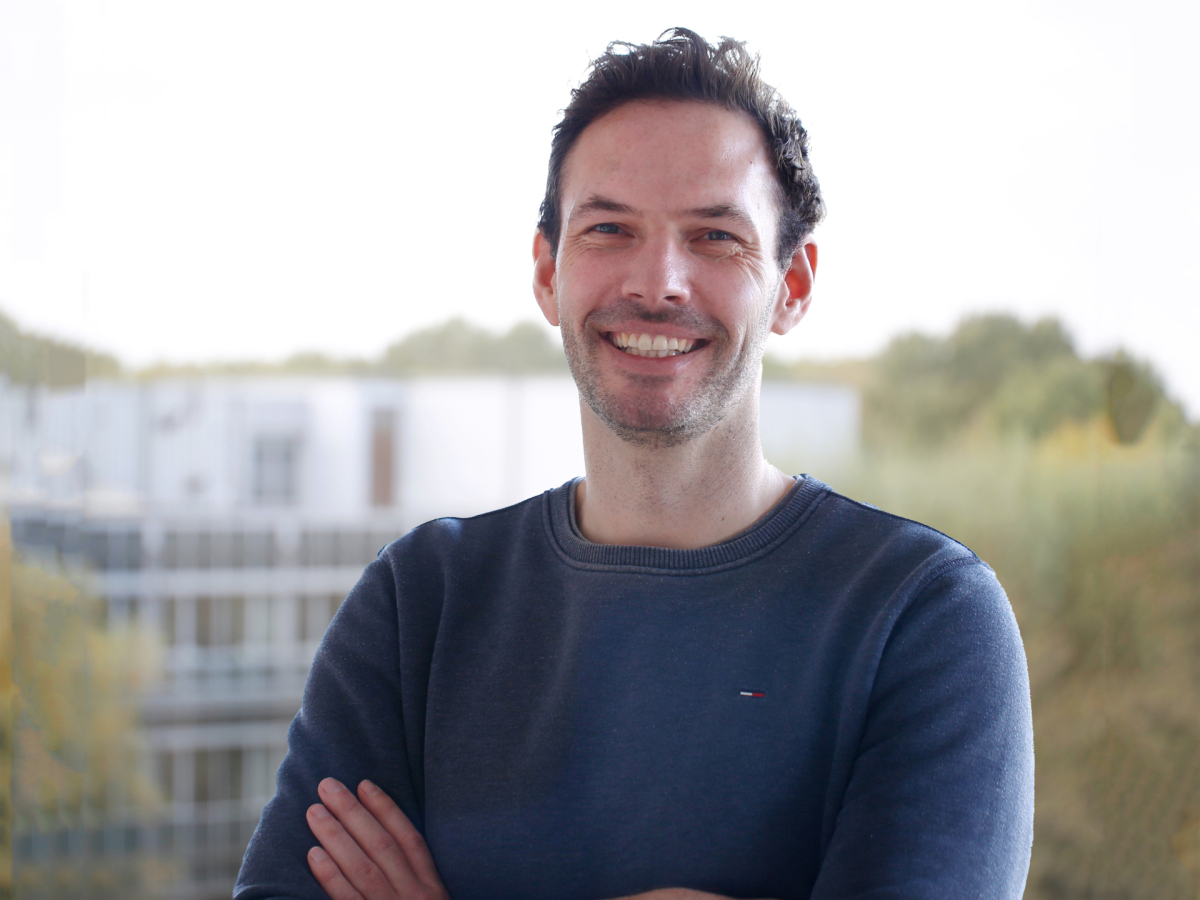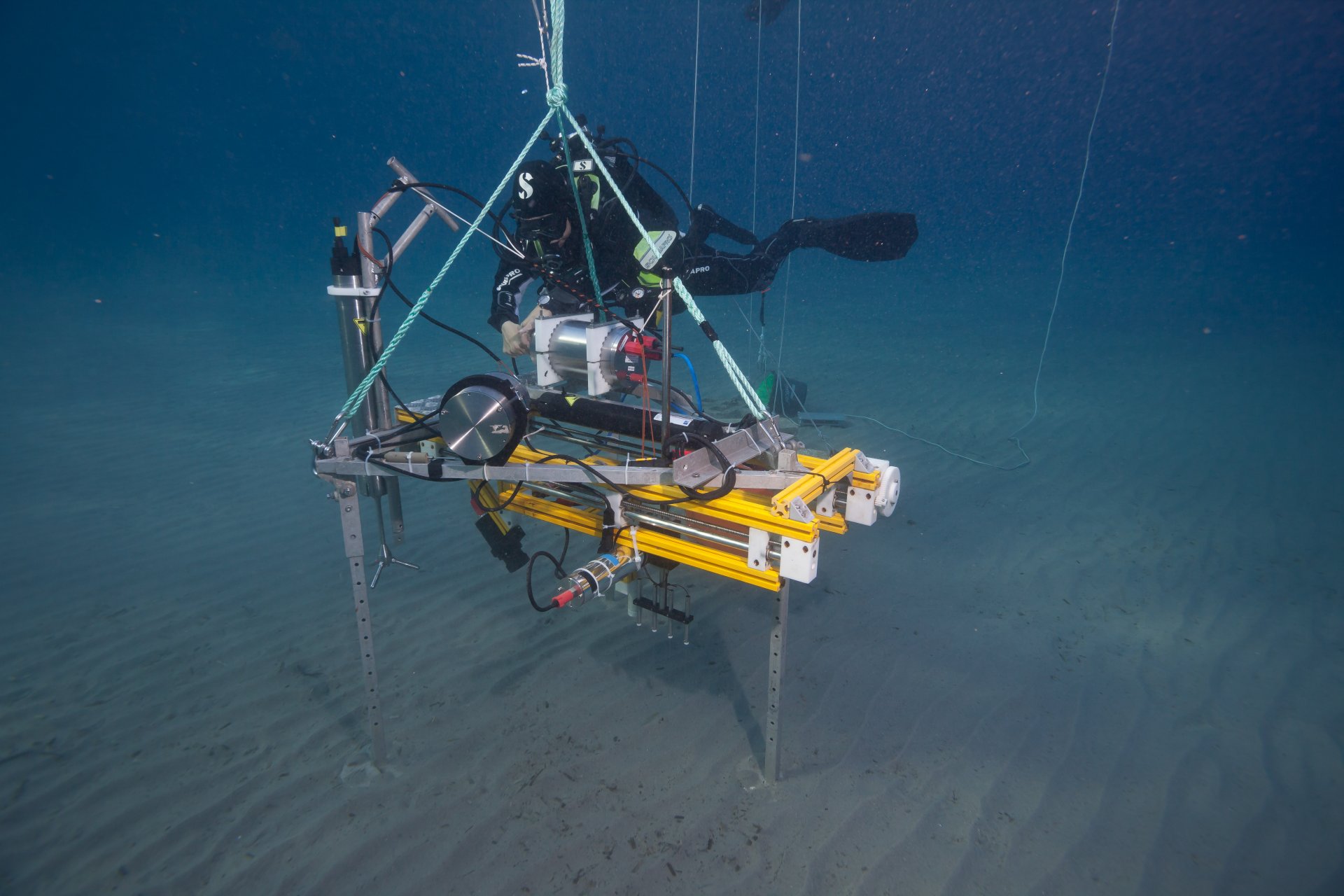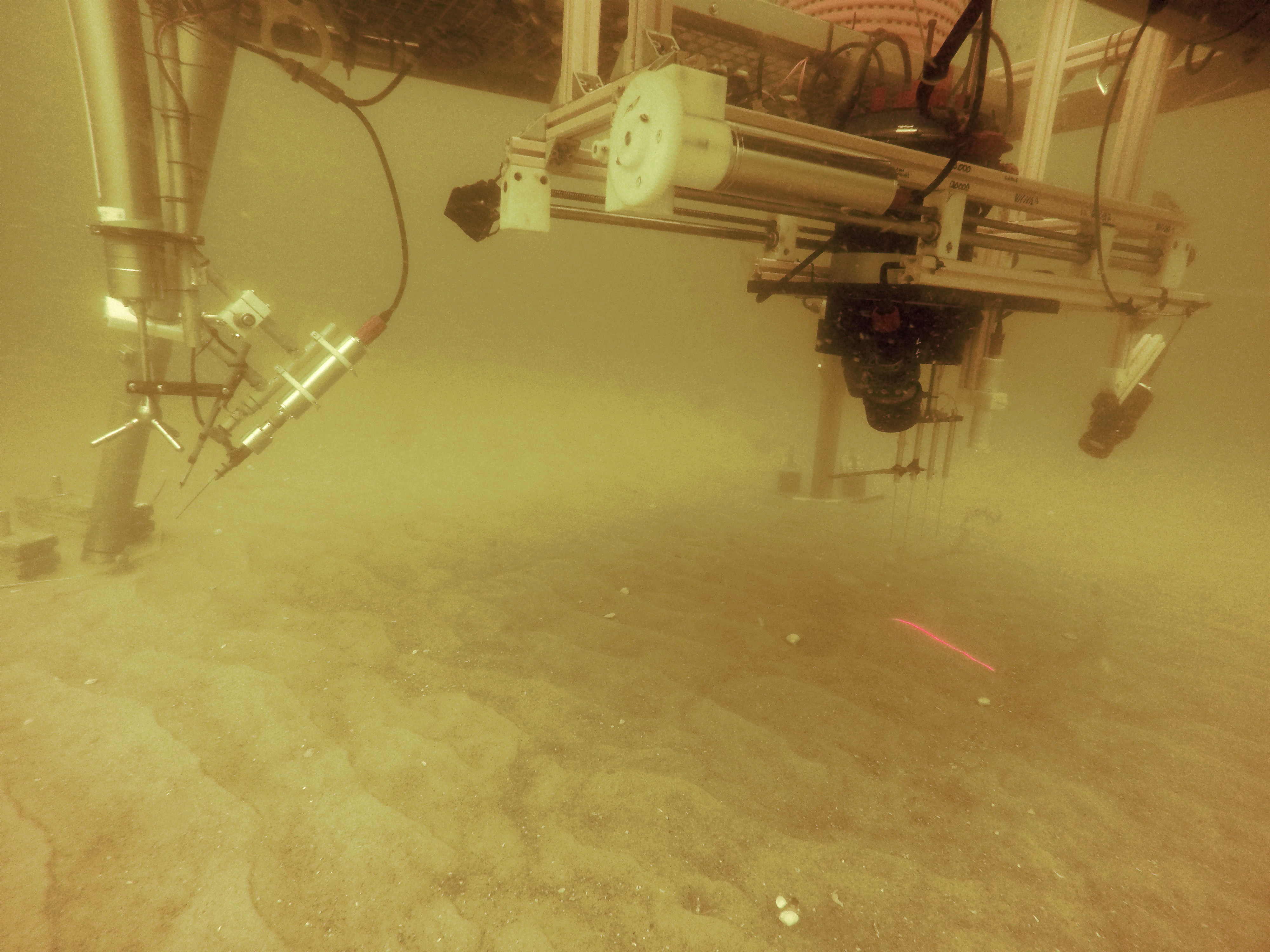Lance-A-Lot
What is Lance-A-Lot?
Lance-A-Lot was developed at our Institute and is not just a single device but rather several devices. It is essentially an observation station that is placed on the seafloor which operates autonomously from there. The system, which weighs around 600 kg and is roughly the size of a small car, was developed in order to help our scientists better understand the dynamic interaction of currents, sediment transport, and (microbial) exchange processes at the bottom of the oceans. For example, Lance-A-Lot can simultaneously measure the flow velocity, the shape of the floor, and the oxygen levels in the sand.
How does Lance-A-Lot work?
Lance-A-Lot comes in three different sizes. The larger versions are launched by research vessels such as the FS Heincke; the smaller ones can also be used by divers. However, the basic principle is the same for all versions. The devices consist of a metal frame that can be set down on the seafloor. On this frame are rails for a carriage, which serves as a support for various devices such as sensor lances for measuring oxygen, a laser for scanning the shape of the floor, an underwater camera, and probes for measuring salinity and current velocities.
Lance-A-Lot operates autonomously on the seafloor and does not need to be connected to the research vessel. The carriage with the sensor lance always moves forward a small distance between measurements. For the individual measurements, the sensor lance is slowly driven into the seafloor and out again.
Meanwhile, the laser scans the seafloor as can be seen in the video under “Lance-A-Lot in action”. The laser emits a red line that adapts to the respective floor structure. This data can then be used to create a 3D map of the subsurface. The images from the camera on the device are used to analyse sources of error in the evaluation and observe the various aquatic creates such as starfish, flatfish, sea urchins, and hermit crabs.
Lance-A-Lot is not a static system and is constantly being further developed and adapted in order to meet the various requirements of the scientists.
Lance-A-Lot in action
What drives bacteria in the North Sea
When seawater is flushed through the sand it also transports oxygen into the seafloor, thereby stimulating the resident microorganisms. The more oxygen arrives, the more active the microorganisms are. That allows them to turn over large amounts of carbon and nitrogen, for example. This is particularly important considering that rivers transport large amounts of nitrogen and other nutrients to the North Sea. Until now, the interaction of sands and seawater was mainly investigated under laboratory conditions. But, it is essential to investigate these processes under natural conditions to validate the laboratory findings and estimate their importance.
You get more information about these studies in the press release "Fresh air in the sand: What drives bacteria in the North Sea"
Original publication:
Ahmerkamp, C. Winter, K. Krämer, D. de Beer, F. Janssen, J. Friedrichs, M. Kuypers und M. Holtappels (2017): Regulation of benthic oxygen fluxes in permeable sediments of the coastal ocean. Limnology and Oceanography.
DOI: 10.1002/lno.10544
This paper was produced in the framework of the MPI-marum cross-cutting-project 5 (CCP5) "Organic-matter remineralization and nutrient turnover in permeable sandy sediments”.
More publications:
D. Probandt,. K. Knittel, H. E. Tegetmeyer, S. Ahmerkamp, M. Holtappels und R. Amann (2017): Permeability shapes bacterial communities in sublittoral surface sediments. Environmental Microbiology 19(4): 1584-1599.
Lance-A-Lot in video
The time-lapse video on the left shows Lance-A-Lot in operation. From preparation on the research vessel to deployment at sea.
Who uses Lance-A-Lot?
It is mainly used by scientists of the Department of Biogeochemistry. However, it is also open to all other scientists of the institute as well as to external researchers in the context of collaborative projects.
Contact
Scientist
MPI for Marine Microbiology
Celsiusstr. 1
D-28359 Bremen
|
Room: |
3130 |
|
Phone: |



